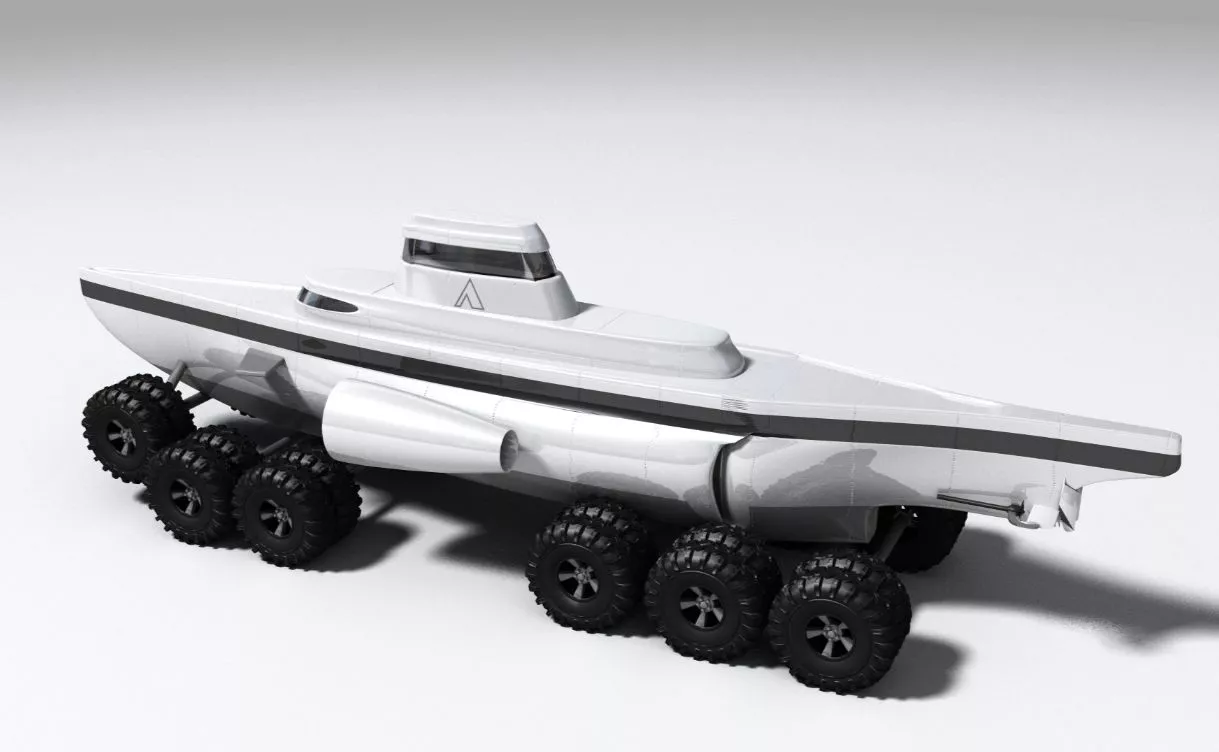The Transatlantic Seafloor Research Challenge is not a real competition, but that hasn't stopped British designer Philip Pauley from envisioning it, and the watercraft that would take part in it. If it were to exist, the challenge would require underwater vehicles to cross from the UK to the US using whatever route their team members thought was the quickest, but they would have to stay in physical contact with the sea floor for as much of the distance as possible. Pauley's Pathfinder submarines would be equipped with wheels or tracks for trundling along the bottom on most of the crossing, but would also theoretically be able to propel themselves up through the water when necessary.
The designer estimates the trip taking between two and four weeks, during which time the submarines would maintain an average depth of at least 4,000 meters (2.5 miles). They would not be allowed to surface, but would instead be followed by topside support vessels that monitored their activities, and supplied life support and battery recharging power via umbilical cables. The support vessels would also be equipped with ROVs (underwater remote-operated vehicles), to assist the submarine crews in emergencies.
The Pathfinders themselves would be 10 to 15 meters (33 to 49 feet) in length, and would support a three-person crew. A lithium battery system would provide power for the wheels/tracks, and for the two-to-four side thrusters and rear propeller. All waste generated by the crew would have to be contained within the vehicle.

While the Transatlantic Challenge will presumably never happen, Pauley told us that he invented it as "a narrative to try to drive interest into the concept and engage investors." Instead of winning races, he sees the subs being used more for scientific research and exploration.
When we asked about possible positive buoyancy issues with all those big fat tires, he replied that his hope is that they would be semi-solid. He admitted, however, that the optional heavy tracks could pose a negative buoyancy problem, and were pictured mostly to grab the attention of potential military customers. The windows, he added, were just included for wider audience appeal, and would not be part of an actual Pathfinder.
Given how such large windows would likely stand up to the pressure two and a half miles under the sea, that's probably for the best.











